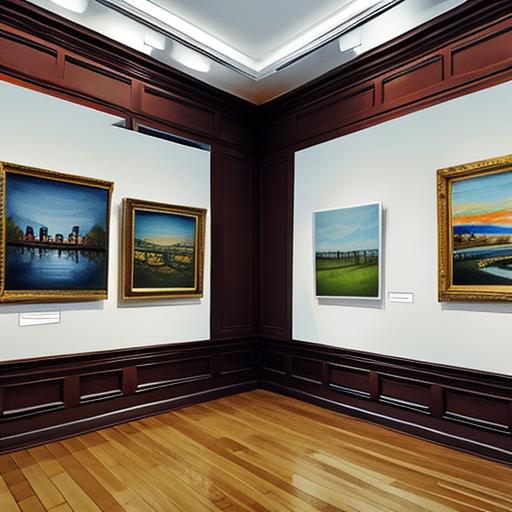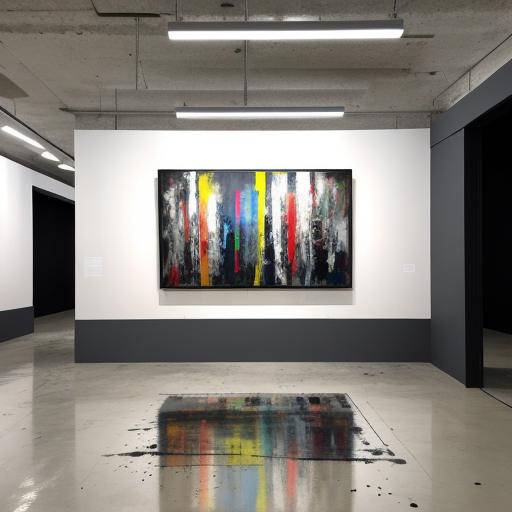Have you ever wondered about the fascinating journey an artwork takes from the artist’s studio to a museum wall? Artwork provenance research is like being a detective, piecing together clues to uncover the complete story of a painting or sculpture. This exciting field combines history, mystery, and cutting-edge technology to trace the ownership history of art pieces, ensuring they’re authentic and legally obtained.
Key Points Summary
- Provenance is the complete ownership history of an artwork from creation to present
- Proper provenance research protects against forgeries and ensures legal ownership
- Modern technology like blockchain and AI is revolutionizing how we track art history
- Museums and collectors have ethical responsibilities to research their collections
- Gaps in provenance don’t always mean something suspicious happened

What Is Artwork Provenance and Why Does It Matter?
Artwork provenance comes from the French word “provenir,” meaning “to come from.” Think of it as an artwork’s biography – a detailed record of everyone who owned it, where it lived, and how it traveled through time. This history provides a rich narrative about the piece, including the artists who created it, the collectors who owned it, and the cultural context and collecting tastes of the era.
But provenance is much more than just a list of names. A robust, well-documented provenance is the cornerstone of authenticity in the art world. In our modern world where sophisticated forgeries can fool even experts, a clear chain of custody serves as crucial evidence that confirms an artwork’s genuineness.
Artwork Provenance Timeline
A Journey Through Centuries of Ownership
The Million-Dollar Difference
The financial impact of good provenance can be staggering. Consider Leonardo da Vinci’s Salvator Mundi, which sold for a record-breaking $450 million in 2017. The rigorous provenance research that traced the painting back to the royal collections of King Louis XII of France and King Charles I of England was a monumental factor in its valuation, turning an already valuable work into a record-breaking masterpiece.
On the flip side, gaps or uncertainties in an artwork’s history can dramatically decrease its value and make it nearly impossible to sell or display publicly.
The Detective’s Toolkit: How Provenance Research Actually Works
Starting the Investigation
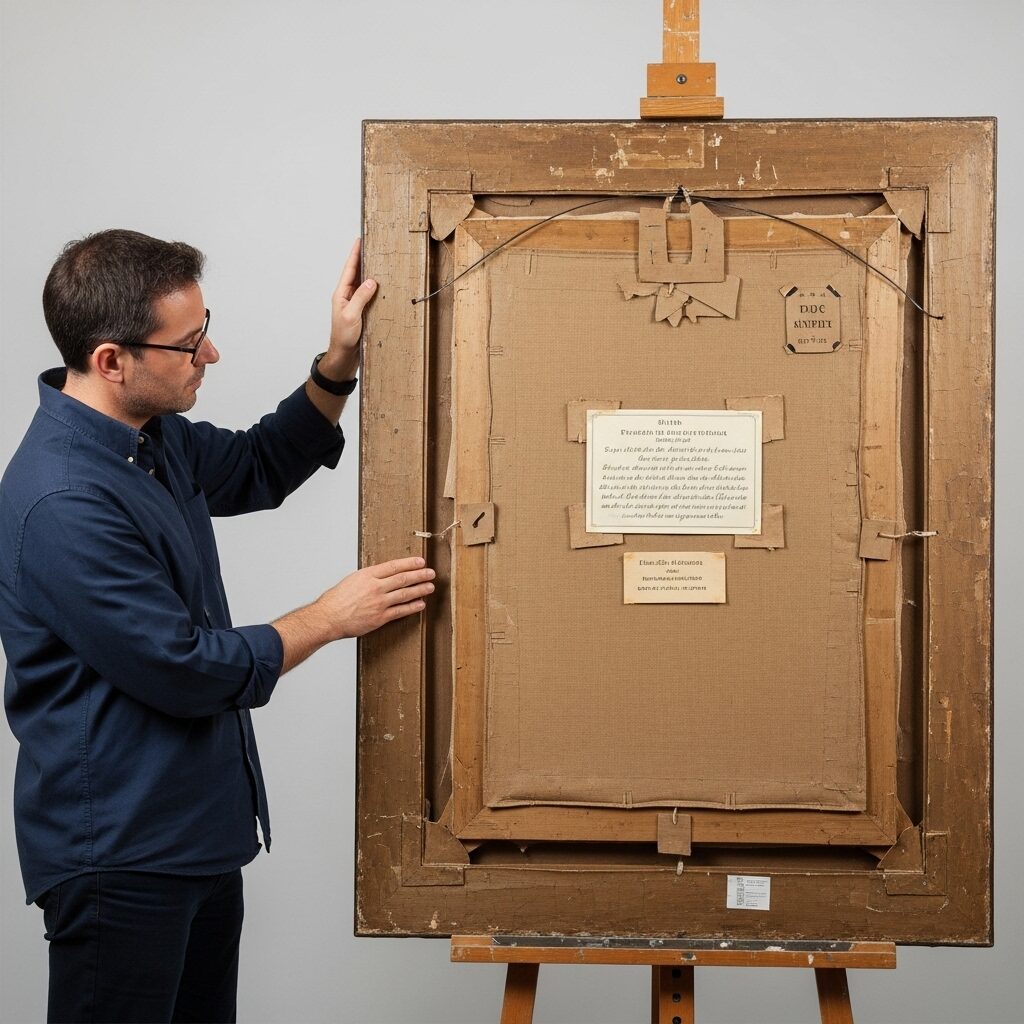
The process of tracing an artwork’s provenance is often likened to a detective’s investigation, requiring a meticulous, backward-looking approach. Researchers typically start with the current owner and work backward toward the artist’s studio, following each clue like breadcrumbs.
The investigation often begins with surprisingly simple steps. Even a simple Google reverse image search can serve as an effective starting point, often leading to old pictures of a painting that provide a new lead.
Physical Evidence Speaks Volumes
The artwork itself often holds the most valuable clues. A physical examination of a painting’s reverse side, for instance, can be remarkably revealing, as it often collects the “imprints of exchange” like a passport. These might include:
- Exhibition labels and stickers
- Gallery stamps and dealer marks
- Shipping labels from international transport
- Previous frame marks or nail holes
- Conservation treatment records
The Paper Trail Hierarchy
Not all documentation carries equal weight in provenance research. Here’s how experts rank different types of evidence:

| Document Type | Authority Level | Description |
|---|---|---|
| Catalogue Raisonné | Highest | Comprehensive scholarly inventory of an artist’s works |
| Original Sales Receipt | High | Primary documentation of purchase |
| Expert Certificate | High | Authentication from recognized specialist |
| Exhibition Labels | Medium | Shows display history |
| Appraisals | Low | Not authentication, just value assessment |
| Oral History | Lowest | Unverifiable without supporting evidence |
The gold standard is a catalogue raisonné, a comprehensive scholarly inventory of an artist’s works that serves as the most authoritative source for provenance, authorship, and authenticity.
The Digital Revolution in Art Research
Powerful New Tools
The digital age has fundamentally transformed provenance research, providing new tools and resources that were previously unimaginable. Major institutions are digitizing their vast archives, making historical records accessible to researchers worldwide.
The Frick Art Research Library is digitizing over 90,000 auction catalogs, creating an unprecedented resource for art historians. Meanwhile, the Wildenstein Plattner Institute is making papers of artists, dealers, and collectors freely available online.
AI and Machine Learning
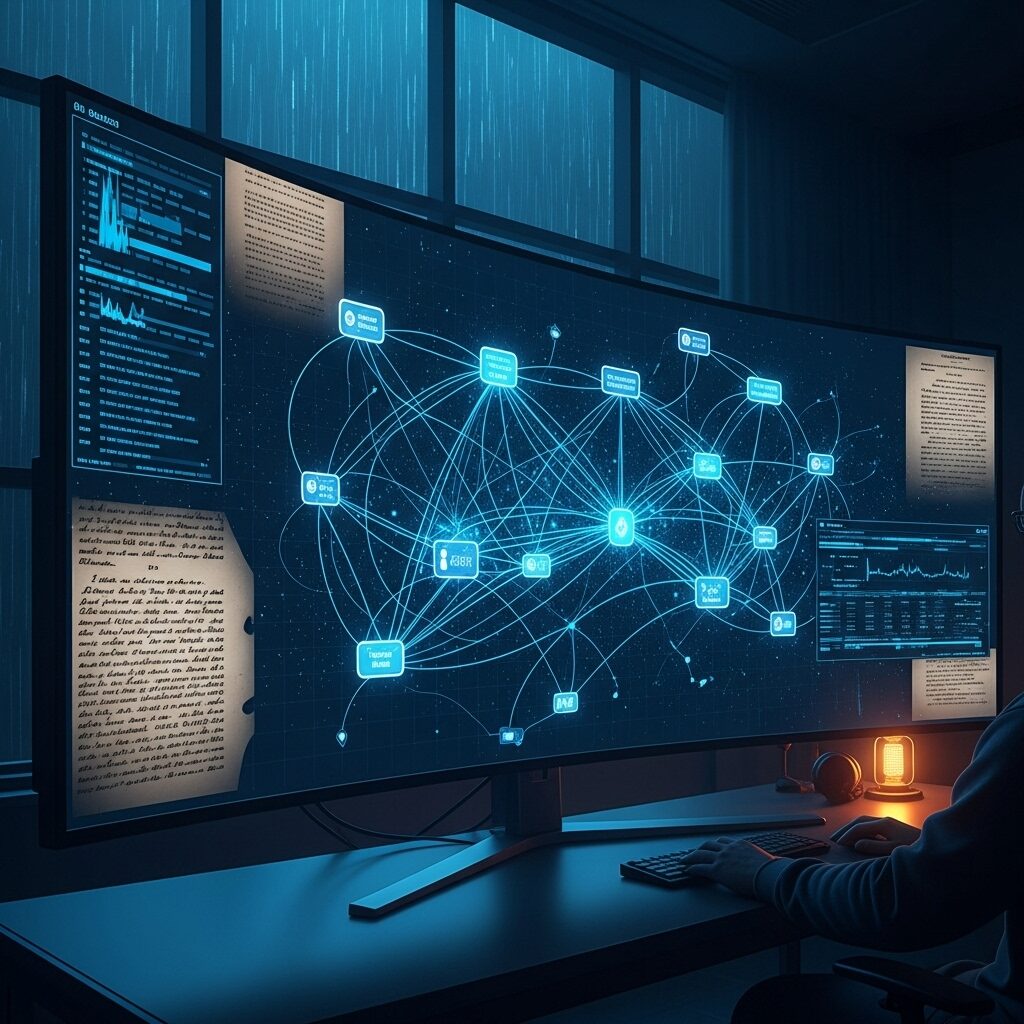
Institutions are now using powerful tools like Optical Character Recognition (OCR), text mining, and machine learning to analyze millions of digitized documents, making it possible to identify and connect disparate data points in a fraction of the time.
This technology can scan through centuries of auction records, exhibition catalogs, and correspondence in minutes, finding connections that might take human researchers months to discover.
Who’s Responsible? The Art World Ecosystem
Museums: Guardians of Culture
Museums serve as cultural guardians, with strict responsibilities for their collections. Museums serve as gatekeepers of cultural heritage, entrusted with the duty to not only acquire and preserve artworks but to ensure their collections are legally and ethically sound.
Leading institutions like the Harvard Art Museums have clear policies: they won’t acquire works if there’s reasonable belief they were stolen, illegally excavated, or exported in violation of local laws.
Auction Houses and Galleries
These market intermediaries play crucial roles in establishing and verifying provenance. Major auction houses like Christie’s have begun using blockchain technology to create permanent digital records of sales, moving away from traditional paper-based systems.
Private Collectors: Not Just for Institutions
For collectors, thorough provenance research serves a dual purpose: it safeguards against legal and ethical risks and enhances the investment value of their collection. Without proper documentation, collectors risk acquiring stolen or illegally exported items, potentially facing legal consequences and financial losses.
Real Cases: When Provenance Makes Headlines
The Salvator Mundi Controversy
The story of Leonardo da Vinci’s Salvator Mundi illustrates both the power and limitations of provenance research. The painting, long thought to be a copy of a lost original, was rediscovered, restored, and re-attributed to Leonardo da Vinci, leading to its record-breaking sale for $450 million in 2017.
However, the attribution sparked fierce debate among art historians. While some experts confidently attribute the work to Leonardo, citing preparatory drawings and technical analysis that reveal his signature sfumato technique, others argue that it is a workshop piece, heavily restored to the point of a “heavily made-over wreck”.
The Monet Restitution
The Kunsthaus Zürich agreed to a “just and fair solution” with the heirs of Jewish industrialist Carl Sachs, who sold the painting under duress to fund his family’s flight from Nazi persecution in 1941. This case demonstrates how provenance research can address historical injustices and lead to ethical solutions.
The Benin Bronzes Movement

The Museum of Fine Arts (MFA) in Boston, for example, proactively researched its holdings and restituted two Benin Kingdom objects after its investigation confirmed they were pillaged during the 1897 raid. This represents a growing movement toward addressing colonial-era acquisitions.
Dark Secrets: The Challenges and Risks
The Problem of Gaps
Not every gap in provenance indicates wrongdoing. They can be the result of a lack of record-keeping in a different era, information lost to time, or documents destroyed by natural disasters or war.
However, some gaps are more suspicious than others, particularly when they coincide with periods of conflict or political upheaval.
Forgery and Fraud
The high value of art has unfortunately led to sophisticated fraud schemes. A famous example is the forger John Drewe, who passed off a large number of forgeries by creating an “impressive, but false provenance” by forging letters and other documents, including false entries in exhibition catalogs.
Warning signs of fraudulent provenance include:
- Refusal to show documentation upfront
- Reliance only on photocopies without originals
- Unverifiable signatures or missing contact information
- Conditional statements like “believed to have been owned by…”
Money Laundering Concerns
The art market’s historical focus on confidentiality and discretion makes it a prime vehicle for money laundering and terrorist financing. The proposed U.S. Art Market Integrity Act aims to subject art dealers to the same anti-money laundering requirements as banks.
The Future: Technology Meets Tradition
Blockchain Revolution
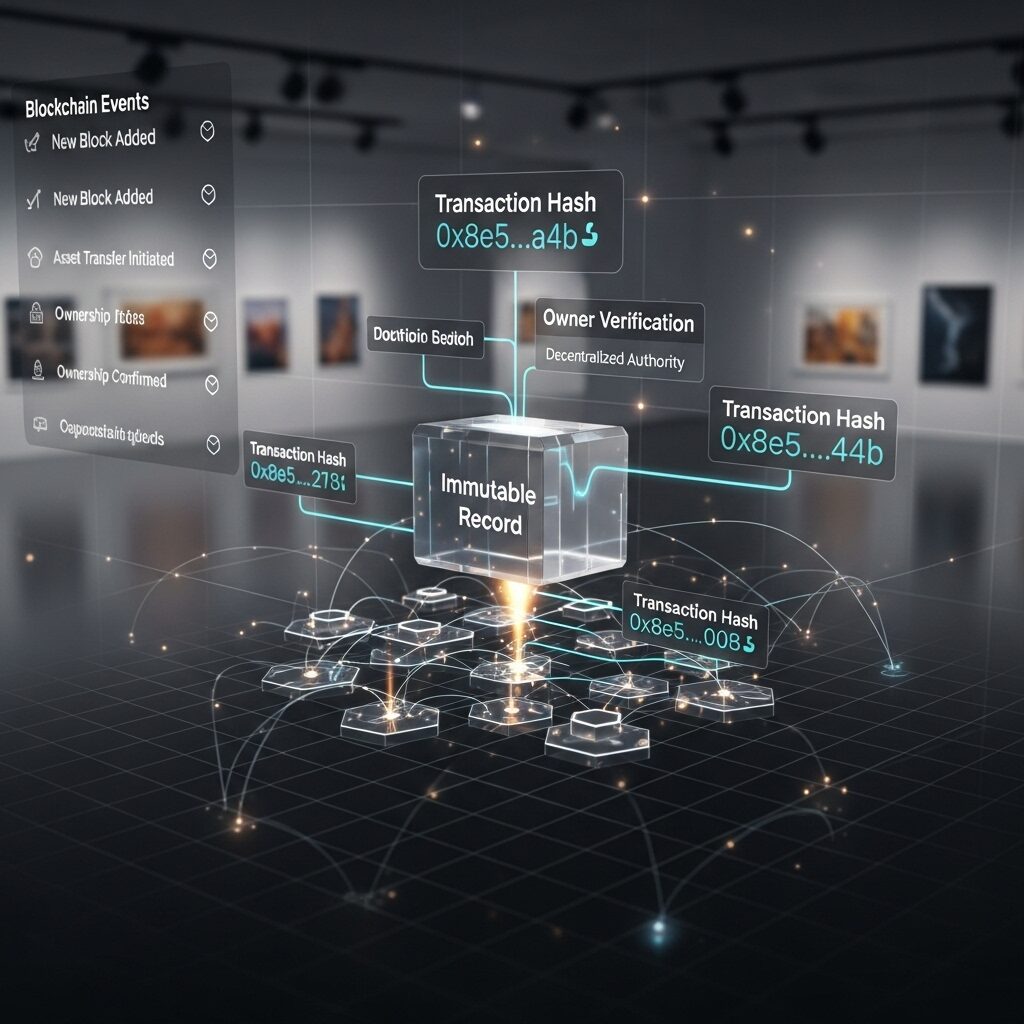
By registering transactions on a blockchain, it is possible to create a verifiable digital chain of custody that is resistant to forgery and alteration. This technology promises to solve many traditional problems with art documentation.
Major developments include:
- Immutable transaction records
- NFT integration for digital art
- Fractional ownership possibilities
- Enhanced transparency
AI-Powered Research
By linking provenance information across different databases, museums and archives can create a decentralized, global network of knowledge. This Linked Open Data approach can expose hidden connections and accelerate research globally.
Legal Framework: International Efforts
Key International Agreements
The UNESCO 1970 Convention provides a framework for combating illicit trade in cultural property, while the Washington Principles on Nazi-Confiscated Art address Holocaust-era losses.
Beyond the Courtroom
Due to the limitations of legal proceedings, a growing number of restitution cases are being settled through diplomatic relationships and non-judicial remedies. These flexible approaches often work better than lengthy court battles.
FAQ: Common Questions About Artwork Provenance Research
Q: How long does provenance research typically take? A: It varies greatly depending on the artwork’s age and complexity. Simple cases might take weeks, while complex historical pieces can require years of investigation.
Q: Can I research provenance for artwork I own? A: Absolutely! Start with any documentation you have, search online databases like the Art Loss Register, and consider consulting professional researchers for valuable pieces.
Q: What should I do if I discover my artwork has problematic provenance? A: Contact a lawyer specializing in art law immediately. There may be options for resolution that don’t require giving up the artwork entirely.
Q: How much does professional provenance research cost? A: Costs vary widely, from a few hundred dollars for basic research to tens of thousands for complex investigations involving international archives.
Q: Are there red flags I should watch for when buying art? A: Be cautious of sellers who won’t provide documentation, prices that seem too good to be true, or artwork from regions with known trafficking problems.
Q: How has technology changed provenance research? A: Digital archives, AI analysis, and blockchain technology have made research faster and more comprehensive while creating permanent digital records.
Conclusion
Artwork provenance research has evolved from a scholarly pursuit into a crucial safeguard for the art world’s integrity. As technology advances and ethical standards rise, the field continues to adapt, ensuring that future generations can trust and enjoy our cultural heritage. Whether you’re a museum professional, private collector, or simply an art enthusiast, understanding provenance helps you appreciate not just what you see on the wall, but the incredible journey that brought it there.
The combination of traditional detective work, cutting-edge technology, and growing ethical awareness promises an exciting future for this essential field. As we move forward, artwork provenance research will undoubtedly become even more sophisticated, transparent, and accessible to all who seek to understand the fascinating stories behind our world’s greatest artistic treasures.
Additional Resources
- The Art Loss Register – World’s largest private database of stolen art
- INTERPOL’s Stolen Works of Art Database – International police database
- Frick Art Research Library Digital Collections – Extensive digitized archives
- Wildenstein Plattner Institute Digital Archives – Free access to art historical documents
- UNESCO Cultural Property Protection – International legal framework
- Nazi-Era Provenance Internet Portal – Holocaust-era art research
- Harvard Art Museums Collecting Guidelines – Model ethical policies
- Museum of Fine Arts Boston Colonial Provenance – Repatriation efforts

